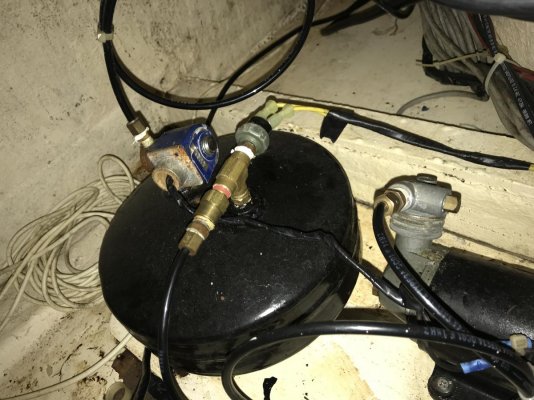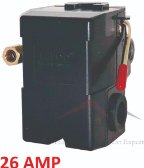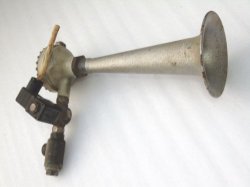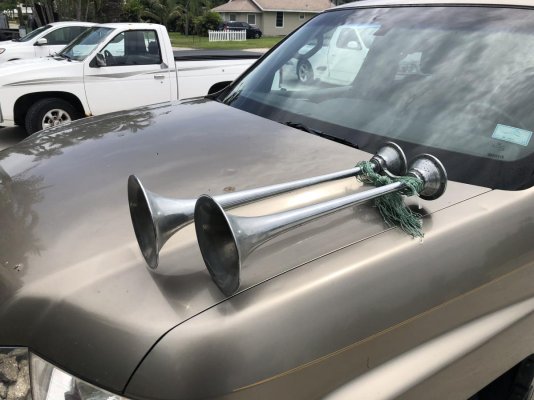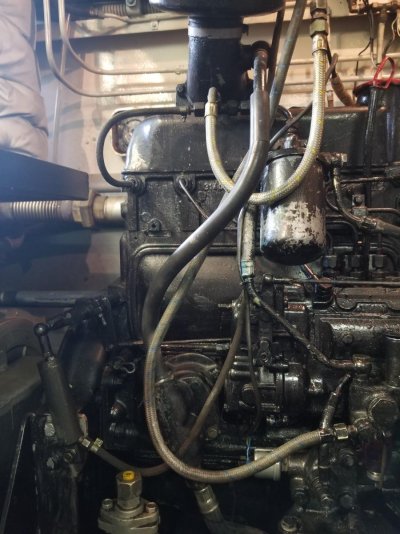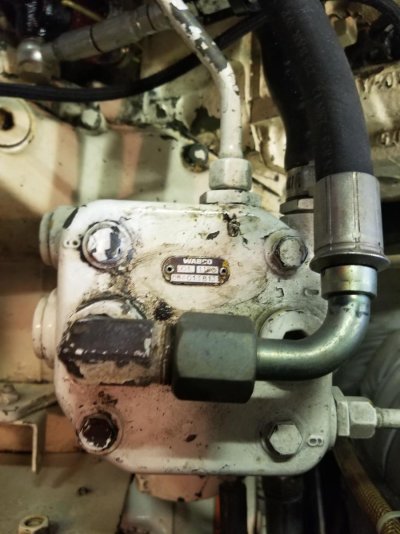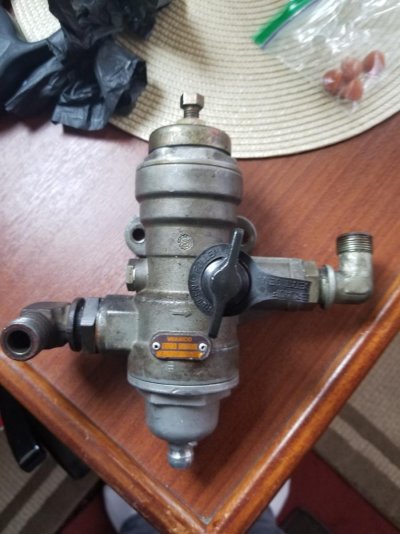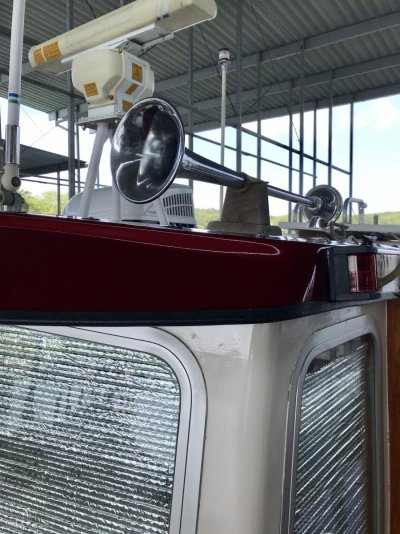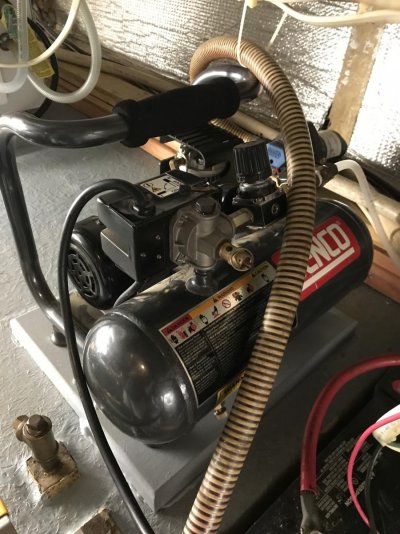angus99
Guru
I’m finishing our punch list before we start on the northern loop. I’m not sure how long the air horn compressor needs to run to fill the small tank on the flybridge. It seems to run nonstop and I’m wondering if there’s a safety release valve I’m not seeing?
Additionally, a ground wire gets noticeably warm while the compressor is endlessly running, so I won’t be using this until that gets sorted out.
In fact, I’m thinking of chucking the whole thing and going electric—but until I do, this will need to work. Does anyone have experience with electric horns that sound as deep and strong as an air horn?
Additionally, a ground wire gets noticeably warm while the compressor is endlessly running, so I won’t be using this until that gets sorted out.
In fact, I’m thinking of chucking the whole thing and going electric—but until I do, this will need to work. Does anyone have experience with electric horns that sound as deep and strong as an air horn?

